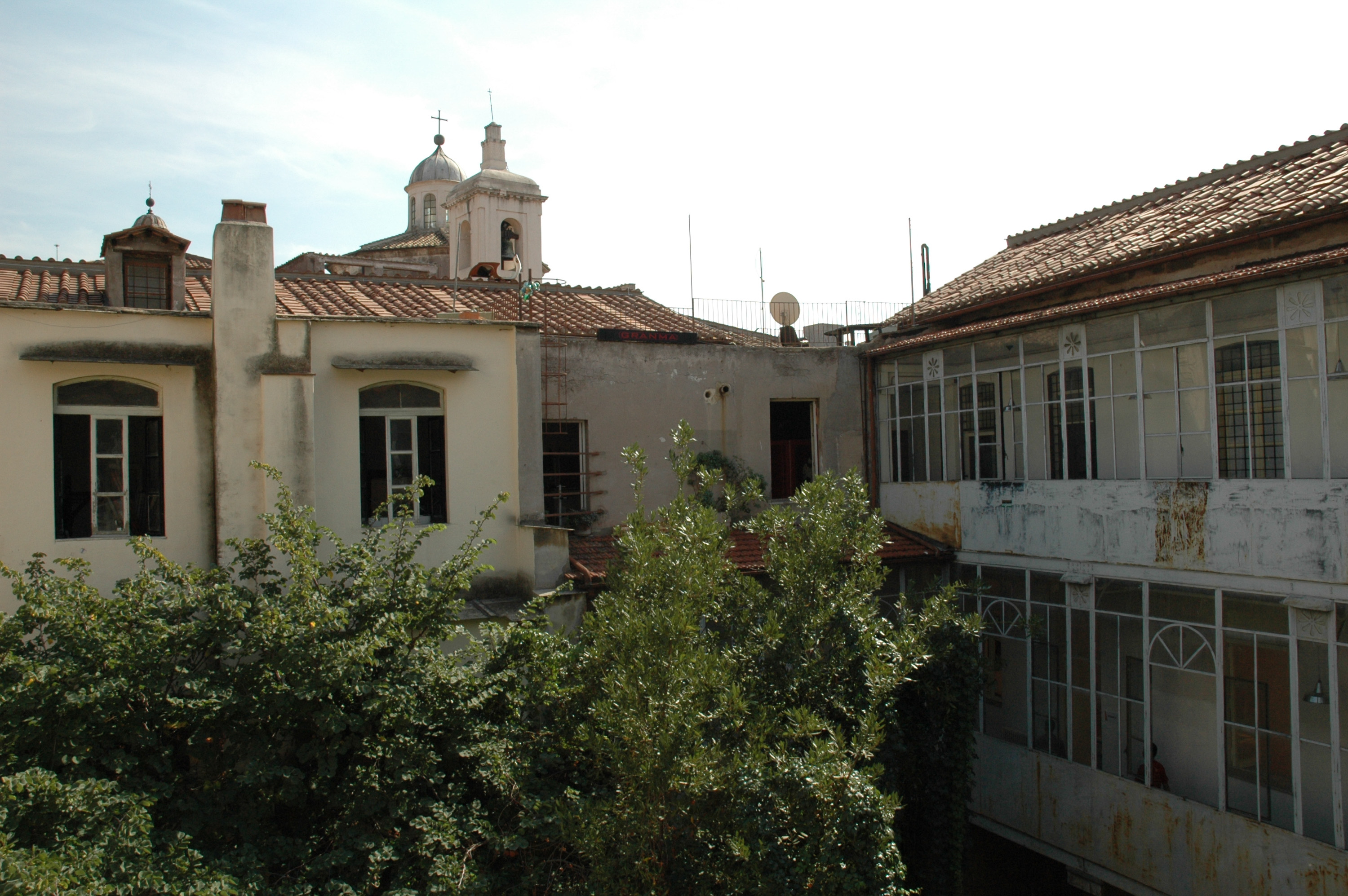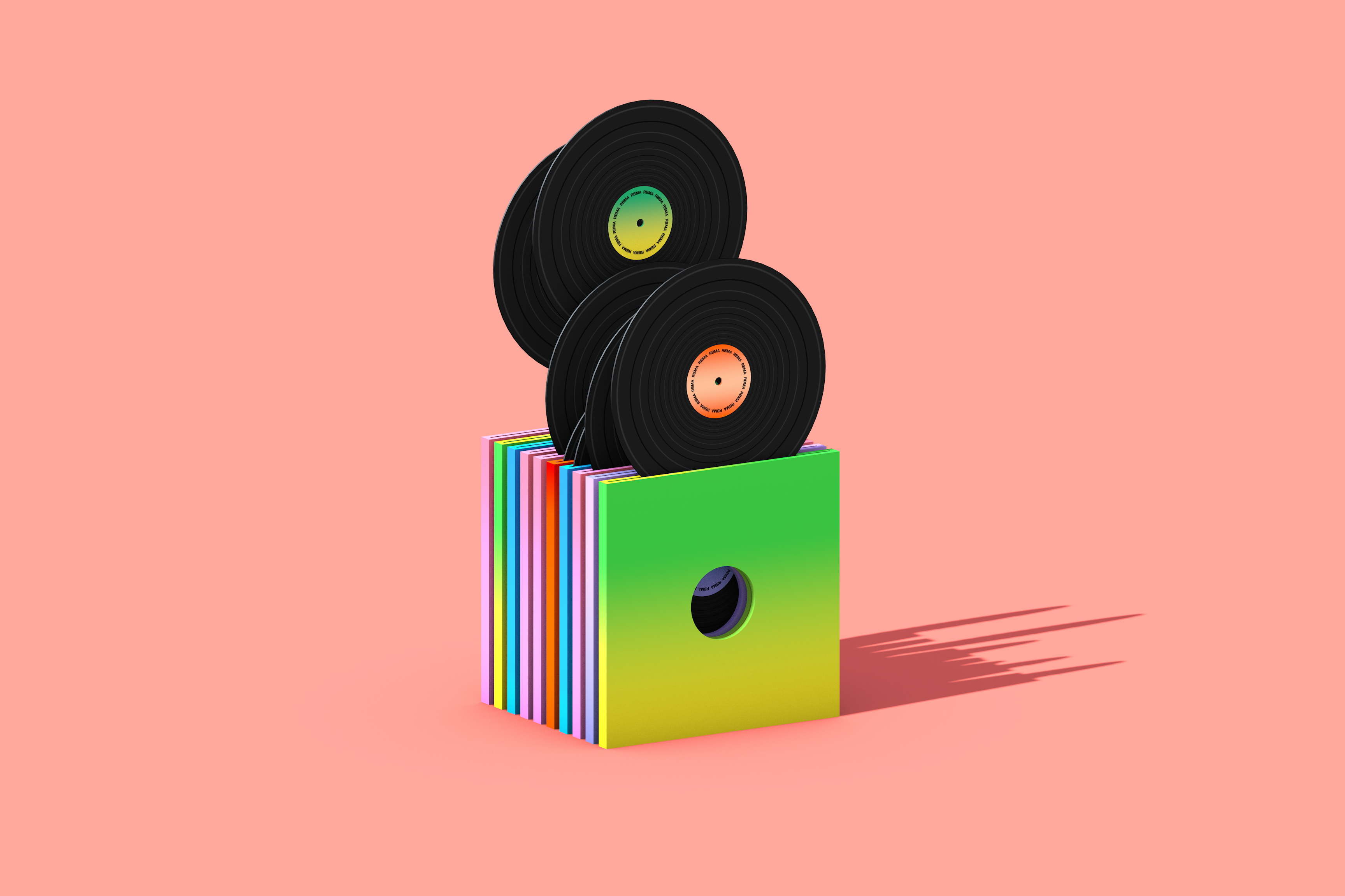“Madri Dell’Invenzione” Meets “La Donna Invisibile:” Ten Unsung Italian Library Music Composers
A breakdown of the female forerunners of the experimental library music metropolis
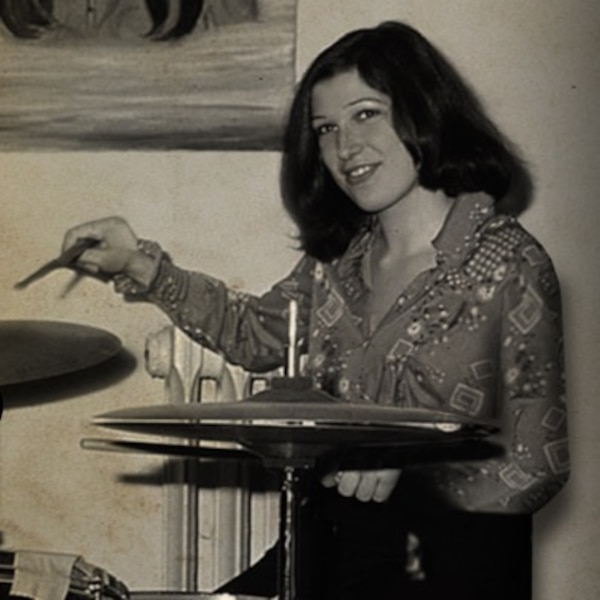
In March 2017, fans of vintage European soundtrack music and the custom-built mood music phenomena known as “library music,” also known as stock music or production music, lost one of the community’s true pillars, if not the main man. For the type of rare-record collectors who read White Album catalogue numbers and call their kids ZoSo, news of the passing of Alessandro Alessandroni will have barely caused a ripple in their pints of craft ale. But for a broad community who lurk in the shadows of foreign record shops and still own VCRs, it’s fair to say that many of us lost our Elvis.
This comparison is perhaps inadequate, yet when it comes to Alessandroni and a long list of lesser-known library music composers, their incomparable compositions are exactly what has galvanised the slow-turning key to an unlikely critical revival. Despite Alessandroni’s passing away at 92 years old, you could argue that his own career in the record industry hadn’t even been born yet. Up until very recently, the most avid music critics haven’t even scratched the surface of European library music, but all of a sudden obscure names (and compact nicknames) such as Moggi, Kema, Teimar, Braen, Binsy and Zalla have began to flood into record shops in re-pressed, luxury sleeves, with little explanation via press release nor biography. It’s a bit like some sort of alien invasion, or the record shop scene from A Clockwork Orange. It’s ironic that the loss of one of library music’s leading figures is being marked with neither a public funeral nor a wake, but something more akin to a baby shower, and one that won’t stop raining. It’s the kind of event where you meet musical family members that you never even knew existed – specifically, and most significantly for the purpose of this article, the mothers, daughters and sisters.
There was a time when a famous female Italian composer must have been a complete rarity. My father always taught me that a good Italian woman must know how to shave a man and polish his shoes... Within the machinery of music, woman were professionally invisible.
Contrary to the cock-rock family trees that the male-orientated music industry has planted around us, the lost cultivar of library music and its research reveals new roots and tangled branches, casting a totally different, less patriarchal picture. With the current frenzy of man-made films, books and events dedicated to the stories of European library music, it’s an essential time to shine a brighter light on the wide discography of incredible woman composers who played hugely important roles, often seldom-sung or miscredited. The spiritual sisters of Delia Derbyshire and Daphne Oram existed in all four corners, and for every Mad Men executive there was a Twisted Sister making a joyful noise.
The draconian notion that “behind every strong man there is a strong woman” couldn’t be better exemplified than within the Italian library music anti-industry. In Rome and Milan, an unrivalled number of female composers worked alongside their brothers, husbands and family members, while often being forced to hide behind male monikers or unisex pseudonyms to avoid prejudice. Once you start to decode the mother-lode, the wealth of unique, unsung, self-initiated, uninhibited feminine abstract musical expression coming out of Italian studios in the 1960s, ’70s and ’80s is fruitful beyond our drip-fed knowledge, with unknown Umbrian Oramic contenders coming to light year after year. As a collector of international library music for over 25 years, I am, by my own admission, helplessly “addicted to heroines,” and when it comes to renewable musical energy it’s fair to quote the stock slogan that “Italians Do It Better.” It’s high time we properly met “Le Madri dell’Invenzione” – the Mothers Of Invention.
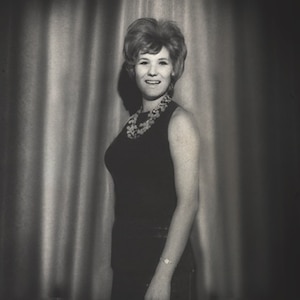
Giulia De Mutiis (Codename - Kema / Giulia Alessandroni)
Why would a strong woman stand behind a man in the first place? In 1957, a young singer called Giulia De Mutiis had her first publicity shots taken with her vocal quartet Quartetto Caravels while standing on equal footing alongside her future collaborator, orchestrator and husband Alessandro Alessandroni. As a proficient multi-instrumentalist, Giulia would continue to stand by Alessandro throughout his formative years as his consistent muse and inspiration, while she retained the role of lead vocalist and co-director for the Moderni Cantori Alessandroni. Named in reference of the newly-wed family name, and not just an extension of Alessandro’s invention, it was in this group that De Mutiis would nurture the rising talents of Morricone’s first-choice singer Edda Dell’Orso and future Disney singer Gianna Spagnuolo.
Enjoying a successful stint translating songs by Stevie Wonder and Ray Charles for the Italian language market, she composed for various Italian beat bands before settling in as Piero Umiliani’s vocalist of choice, most notably singing the lead song for a “mondo” expose about the Scandinavian sex industry called Sweden Heaven And Hell, from which the song “Mah Nà Mah Nà” would later be licensed and re-appropriated by Jim Henson’s musical director for The Muppet Show.
Despite all of this, De Mutiis remained a relatively behind-the-scenes presence on the Italian production music scene. Although often confused throughout the 1970s with Edda Dell’Orso, on account of her breathy vocals on a wide range of “Giallo,” library tracks intended for thrillers, it was on these tracks that her experimental work with husband Alessandro (operating under the pseudonym Braen) and an esoteric composer called Giuliano Sorgini (under the disguise name Raskovich) began to enter genuine groundbreaking territory. Sorgini himself recorded two of the library genre’s finest albums in 1970: The Living Dead At The Manchester Morgue and a concept LP called Zoo Folle. Having mastered a unique brand of haunting fuzz-rock with tough beats and electronic effects, Braen and Raskovich enlisted the De Mutiis’s improv vocal talents for a library music album called Inchiesta Giudiziaria for the fledgling Octopus label, which immediately lead to the formation of the short-lived, spooky psych-funk super-group the Pawn Shop, for which De Mutiis adopted the Eastern-sounding nickname Kema.
For the next decade, the Kema guise would provide an uninhibited platform for De Mutiis to experiment with a broad range of exotic instruments, which she would self-edit, loop and distort with the family’s portable Revox machine while recording further library music tracks in the studio of longtime friend Piero Umiliani, who’d imported Rome’s first VCS3 synth from Putney in 1970. Her ethnological studio experiments / sonic approximations for the Italian Folkmusic label beg comparisons to the EFS experiments of Holger Czukay and Irmin Schmidt from German band Can, and were collated by Cacophonic Records in 2014, 30 years after her tragic and untimely death from a tumor in 1984.
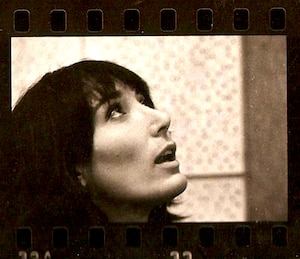
Daniela Casa (Codename - Elageron)
Another sister of synthesis to make the shift from translator to transistor in the early ’70s was Daniela Casa, who as a one-time collaborator with Enrico Simonetti (father of Goblin’s Claudio Simonetti) went on to create the Dany & Gepy duo with Giampero Scalamonga – later to become the commercial disco phenomena Gepy & Gepy – and penned one of the most memorable TV theme tunes of the early ’70s for the series Noi Donne (We Women). Casa would balance her unpredictable commercial career as a lyricist, multi-instrumentalist and producer working for small, independent library music labels such as Romano Di Bari’s network of Canopo / Deneb / Union & Flirt Records, alongside a small family of self-sufficient solo musicians. Spearheading a new-breed of artists such as Fabio Frizzi, Ugo Bosoni and A.R “Anthony” Luciani, Daniela would work alone in a small studio embracing domestic synth technology while providing Italian television and genre-films with unique and futuristic music. Having formed a romantic relationship with Remigio Ducros, who played keyboards in the successful Bologna rock band the Idols, Casa’s new penchant for hard rock saw her create a steady stream of stripped-down solo jams in the vein of Black Sabbath or Rome’s New Trolls. With the birth of their daughter Valentina, Ducros and Casa moved to the countryside, pooling their technology resources to build a studio (assisted by her cousin and library-composer Paolo Casa) where she would make a wide range of multidisciplinary futurist-pop fuelled by a Minimoog and the Arp 2600, while simultaneously raising her small family (including her stepson Gianluca Ducros, from Remigio’s previous marriage).
Creating dedicated concept LPs based on modern art, social corruption, sports, childhood and architecture, Casa would challenge herself as an artist and the limitations of her domestic studio, as well as the stereotypical roles of a housewife, at every corner. “My mother was always brave woman” exclaims her daughter Valentina, who was by her side as a child during her most creative period. “Nearly all of her work was made in her studio at our family home. She would balance music with life essentials like fishing and carpentry...and windsurfing.”
In 1977, as Valentina began school, Casa and Ducros would team up with singer and actor Mauro Chiari (bass player with Le Pecore Nere, or the Black Sheep) and form the hippie pop group Mariposa (Butterfly), which earned them wide Italian acclaim. This lead to appearances on kid’s TV shows, which coincided with Casa composing more music for youth choirs. As a guitar teacher for local children, she was also keen to inspire the next generation. Under the pseudonym Elageron, she and her stepson Gianluca composed and released a very rare electronic LP for the Orrery label called Breeze, with Gianluca adopting his own pen-name of Mirneg. In 1986, months after recording a career retrospective show for regional Radio RAI Alto Adige, Daniela tragically lost her life to breast cancer at the age of 42.

Emma De Angelis (Codename - Juniper)
As one of the most enigmatic figures of the 1970s Italian soundtrack and library music network, Emma De Angelis and her short recording career would provide thirsty fans of speedball psychedelic rock and drummy instrumental funk with a micro-tight discography to rival many of the longstanding bastions of the otherwise male-orientated business. Born in Rocca di Papa, near Rome, into a flourishing musical environment, De Angelis was the younger sister of future award-winning composers Guido and Maurizio De Angelis, a duo who, under names like Oliver Onions and Dream Bags, wrote chart-topping lyrical theme tunes for a wide range of Italian crime, Giallo and spaghetti western films, appearing alongside full scores by Ennio Morricone and the Magnetic System composers Bixio Frizzi & Tempera.
With encouragement from her brothers, Emma, who would also write music under the pseudonym of Juniper, recorded a clutch of solo material and seldom-credited studio contributions to Guido and Maurizio’s film commissions, such as the score for Giuliano Carnimeo’s Simone e Matteo: Un gioco da ragazzi, AKA Convoy Buddies. With Emma simultaneously pursuing a career as an illustrator and set designer, the De Angelis family contacts would open doors at the offices of Romano Di Bari, whose up-and-coming Flirt label was finding success providing custom mood music for use in TV and film.
Alongside important composers like Alessandroni, Gerardo Iacoucci and A.R. Luciani, the young Emma De Angelis would record a small number of tracks for a compilation called Underground Mood, where she was credited in the small print as E De Angelis. These tracks are the best window into De Angelis’s short musical career before she became a full-time visual artist, and with an unknown personnel or studio date, it is easy to speculate a potential family-jam in Piero Umiliani’s Sound Workshop studio in 1972 as the basis for Underground Mood. One only has to take a listen to Guido and Maurizio’s instrumental theme “Gangster Story,” from Enzo G. Castellari’s 1973 thriller High Crime (which later appeared on Tarantino’s Death Proof soundtrack), or the trippy title theme to Paolo Poeti’s kinky 1976 drama Inhibition to spot the family resemblance.
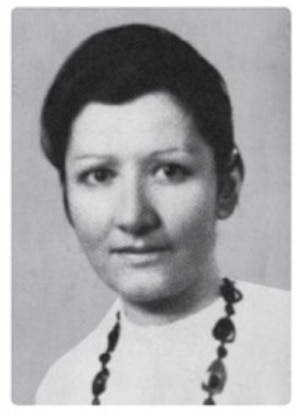
Maria-Teresa Luciani
As an established musicologist with several respected theses and books to her name, Maria-Teresa Luciani came from an educated family of academic and formally trained musicians. However, her own short-lived career as a recording artist has remained an enigma for many years, even amongst the most fastidious library music collectors.
Her truly outstanding (and equally scarce) Sounds Of The City album for the micro-collection NeouvaSerie on the library music label Fama stands up as a rare example of her tape-manipulation music and loop-based song structures, using natural melodies and rhythms in what can only be described as sonic architecture. Utilising theoretical methods (which would later be considered “industrial music”) by taking a portable Uher tape recorder into urban environments, Luciani’s sensitive approach to sound would render an unlikely set of spacious, melodic compositions and dream-like, mechanical, hallucinogenic soundscapes – quite unlike anything outside the realms of Delia Derbyshire and Basil Kirchin’s self-initiated projects – while retaining a strong Italian personality due to the album’s domestic source material.
Co-produced and encouraged by her brother A.R. Luciani, Maria’s theoretical experiments involving lengths of magnetic tape being looped around cotton bobbins and door handles found a friendly home at the Fama label, who also commissioned a set of baroque themes composed using her formal training, both of which were believed to be her only recordings. In recent years, two very rare albums for the Le Monde label featuring her name as a composer have risen to the top of collectors’ lists, including a jazz record clearly played by Anthony Luciani’s band, as well as an exciting electronic would-be follow-up to the essential Sounds Of The City, made for a series of current affairs programmes called Third World, which begs further comparisons to the music of the obscure Italian electronic composer known as Lamartine.
Serena Marega (Codename - Marega)
Not unlike A.R. Luciani, many Italian library music composers cut their teeth in academic circles, with backgrounds in neoclassical composition, avant-garde, electroacoustic or electronic music running tandem to their library music sidelines, which potentially funded underpaid academic experiments. One such artist was the elusive Marega, AKA Serena Marega, who under her full name Serenella Marega played a key role in the evolution of Italian electronic music as part of the Nuove Proposte Sonore collective (New Sound Proposals). Working alongside another senior female proto-synthesist called Teresa Rampazzi while based in Padua, 30 miles south of Venice, the two electronic composers’ working relationship resembled something similar to that of Daphne Oram and the younger Delia Derbyshire before the duo were joined by unknown composer Patrizia Gracis, forming an exclusive, all-female electronic sound research body.
The trio would work together using imported oscillators and a number of multi-track recorders for an approximately 12-month period up until 1970 – the dawn of modular synthesisers, which saw a distinct decline in musique concrète and electroacoustic research. It was at this point that Marega formed a relationship with A.R Luciani and his American friend David Hoyt Kimball, both of whom were scholars of serious composition and respected counterpoint composers who knew how to supplement income by selling short cues and sound effects to fledgling library music labels. In 1970 Tony would introduce Marega to the Recordi publishing company, who would release seven of her solo electronic music experiments as the B-side to six pieces by David Kimball (in collaboration with an uncredited A.R. Luciani) on a library LP called Climax, thus inaugurating the brand-new library music label Iller.
It’s a lesser-known fact that library music records were the secret hiding place for some of Marega’s personal and private experiments.
Two of Marega’s electronic soundscapes would go on to appear on the short-lived independent label Le Monde, alongside tracks primarily composed by A.R Luciani. (At this point, Anthony had also adopted the author-name certificates of his retired friend Kimball and sister Teresa, as well as the pseudonym Peymont, to sidestep musicians union restrictions.) According to Anthony Luciani, Marega had already taken a position as a full-time teacher by the time one final singular track, “Echi Lunari,” was released by the collectible Nazionalmusic on the Supermarket series in 1974, by which time the normalisation of electronic music had heard synthesisers become relatively commonplace.
The early recordings of Teresa Rampazzi and Nuove Proposte Sonore have recently been collected on a dedicated compilation which naturally includes Marega’s input. But it’s a lesser-known fact that library music records were the secret hiding place for some of this unique and important composer’s personal and private experiments.
Vittoria Corona (Codename - Corviria)
Within the darkest corners of the Italian library music landscape sits the elusive music of Corviria, specifically her Psyco Analysis album, which is perhaps some of the most original, unsettling and at times borderline terrifying music you are likely to hear. The mysterious nature of this composer not only applies to her writing style, but also her origin and short-lived thematic modus operandi.
Very much the product of a one-woman project, the two albums for the obscure Squirrel and Titian label were recorded around 1979 by one Vittoria Corona in an intimate and uninhibited electronic studio environment. The suspected first of the two LPs – library labels wisely didn’t put dates on LPs, in order to enhance the sense of timelessness – Psyco Analysis relies heavily on treated piano and solo string instruments, with a heavy usage of either a Space Echo unit or WEM Copycat tape delay (not forgetting Goblin’s favourite Roland String-Synth). As the album progresses, all recognisable organic elements and techniques fall by the wayside, and tracks with harsh titles like “Trauma Infantile,” “Subconscio” and “Schizofrenia” begin to dominate the record. Adopting haunting female vocalisations and some sporadic wet effects, Corviria’s drone-tones and minimalistic reverberated terror slowly begins to grip the listener, with little sign of letting go.
The final track on the album, “Seagull Song,” suddenly switches the narrative polarity, with an innocent lullaby built around an electronic drum machine and a synthetic vocal melody. This final twist on the conceptual LP restores the almost-human element, and either marks the end of the suffering or, indeed, the normalisation of the album’s theme – or our patient’s psychosis. As a listener, it may be I’ve done too much “analysis” myself on this record. But in reality, after a long, long wait on my want-list, I have genuinely been a bit too scared to re-listen to the album…never mind the sequel.
Adding to the confusion is the fact that Corona’s follow-up album Descriptive immediately returns to the seagull theme, complete with two-colour artwork emblazoned by a stark seabird image and a track called “Albatross” (complete with an intro that sounds like the theme tune to Judith Chalmers Wish You Were Here travel programme – which is scary for different reasons). The opening track to the album’s second side, “Albatross” transforms into a delectable slice of emotive, Exorcist-tinged library music, and becomes the natural demarcation line between the album’s opening “Evil Suite” and the B-side’s lighter resolve. Un/fortunately, depending on your tastes, the echoes of the first album never really go away, and the seagull fixation seems to allude to a deeper macabre concept.
It has become a bit of a cliché to describe an emotive instrumental album as “the soundtrack to a film that doesn’t exist,” but in essence, that is exactly what library music is. In Corviria’s case, you have to ask yourself if there is indeed an underlying screenplay that we might never get to read.
To the best of this disc detective’s abilities, the musician called Vittoria Corona remains untraceable, a true missing person. The only other registration of music by Vittoria Corona is as a co-writer for classical themes for a library music album called Impressioni Napolitane. Under normal circumstances, Impressioni Napolitane (“Impressions Of Naples”) wouldn’t be so interesting, until you inspect the names of her collaborators: Dice, AKA Floriana Bozzalla, and a female composer called Luigia Sordini, which is perhaps a fake female pseudonym connected to male composer Benito Simoncini, who once collaborated with Daniella Casa. A pattern emerges: It is evident that by the end of the 1970s, many female composers had started to collaborate in writing teams, which would potentially lead to some new and vibrant creative communities.
Ivana Mattei (Codename - Teimar / A. Carnil)
As with many of the Italian composers, Ivana Mattei’s nickname Teimar was a simple anagrammed truncation of her full name. Reducing composer’s names to a compact word allowed authors more space on the collection agencies’ paperwork to add extra pseudonyms, while also evading the musicians union limitations on workaholics. Following this developing trend, Teimar would become the name used for the small run of compositions made by Cometa label manager Ivana Mattei, which were recorded by Italian rhythm sections when she wasn’t taking care of paperwork for release schedules and licenses at the desk of one of the vibrant library music and soundtrack labels to emerge from Rome in the mid-1970s.
With an impressive roster, including exclusive music by Ennio Morricone, A.R. Luciani and Egisto Macchi, Mattei had access to the créme de la créme of musicians to realise her melodic compositions, which transcended all manner of full-band pop to encompass everything from proto-disco to funk and psych-rock. As a former employee of the largest Italian TV company, she was already well-versed in both sides of the production-music business before she moved in to full-time record production. “One of the companies for which I worked a lot is RAI-TV, which had RAI-TRADE and its own label FONIT-CETRA edizuoni,” Mattei explained to me in 2016. “I was lucky enough to compose commentary music for documentaries, television series and various programs.”
Some of Mattei’s most prestigious placements on library music records are alongside Alessandro Alessandroni, on the ultra-rare Problemi Number 1 (Squirrel Records), and her early cosmic disco tracks on Ballabili Vari (Usignolo Records) are on many collectors want-lists. Under the moniker A. Carnil, Mattei also composed a number of themes for the classic I Gres rhythm section, alongside tracks sampled today by the likes of Kelis and Flying Lotus. Although not one to blow her own horn, in regards to her compositional sideline Ivana Mattei has become more confident, listing her pen-name as a composer on recent Cometa reissues that she continues to manage from their offices in Rome.
Fiorella Fratini (and Anna Leonardi)
If Rome’s Cometa was one of the freshest library music labels to emerge in the mid-’70s, then Milan-based Leonardi was one of the most established. With a history in music publishing dating back to 1924, including upwards of 25 active label names operating under the company’s accounts (such as Leo, Panda, Wild Cat, Lupus, Squirrel, Cooper, Vroommm and many more), the Leonardi label also had international deals with companies like the Sonimage library label in France, who would open domestic Italian artists up to a much wider international market and benefit low-budget directors like Jess Franco in the long run.
One artist to benefit from this wider listenership was a lesser-known composer called Fiorella Fratini, who appeared on a Sonimage compilation of important Italian artists called Obsession Dramatique. Despite the album’s 1973 release date and the general progressive sound of the LP, the short Fratini tracks sound like they came from a very different era and sensibility than her male labelmates. The original Italian home for these awkward compositions, in fact, were on two previously released Fiorella Fratini LPs called Miscelanea N. 1 (Leonardi) and Miscelanea N. 2 (Lupus). Amongst their long tracklists of varied orchestral, baroque and ragtime cues is a tight clutch of magical mechanical tape experiments and electroacoustic excursions, which stylistically have more in common with Delia Derbyshire, Joe Meek, Tom Dissevelt or Nino Nardini than the Moog-fuelled disco of Teimar or VCS3 experiments of Marega.
As the album titles suggest, these tracks could have simply been “filed under miscellaneous” since the mid-’60s until they could gather no more dust in the Leonardi vault. For library fans, they have more in common with Leonardi’s earlier Copper library label, made in an era when composers like A.R Luciani were first experimenting with electric organs and tape machines. These cues wouldn’t sound out of place on an episode of the UK TV show The Prisoner, which has a soundtrack culled mostly from 78 RPM records of Chappell library music recorded in the mid-’60s.
One thing that must be mentioned in further praise of this mystery package is the striking artwork, based on drawings by label boss Piero Leonardi's granddaughter, Anna Leonardi. As the ’70s progressed, Anna Leonardi took a break from her studies to take a part-time job designing numerous sleeves for the label. “The most satisfying thing was that I had maximum freedom to express myself, just like the composers,” she told me in 2017. “I was charmed by the very creative environment, and I decided to stay working at Edizioni Leonardi in a number of roles, despite my parents best wishes.” Anna Leonardi continues to work at Edizioni Leonardi to this day (alongside her brother Piero Jr.), retaining a strong leading female role, like Ivana Mattei, in the business side of the Italian production music industry. Anna also continues her passion for the arts, releasing pictorial and sculptural works when not trying to track down the identities of lost artists like Fiorella Fratini at the request of hell-bent Mancunians.
Nora Orlandi (Codename - Attide / Joan Christian)
With much of the acclaim awarded to Italian library music of the 1960-1980s being limited to the success of the film or TV programme it was synchronised with, when it came to the pursuit of wider notoriety, stock music production was a mostly thankless task. Library composers rarely saw the red carpet. The fact that the Oscars simply forgot that Ennio Morricone was the best composer in the world for 40 years, eventually leading to a tokenistic honorary award, is testimony to the diminishing critical returns. When discussing the most “famous” female artist in the Italian production music canon, one would have to give vocalist Edda Dell’Orso the crown, as an omnipresent vocal accompaniment to Ennio’s expansive filmography – a relationship mirrored in India by RD Burman and his first-choice singer Asha Bhosle. But for the purposes of this article, the hugely creative, improvisational vocalist Dell’Orso, complete with her outernational made-up language, was not strictly a “composer.” Her rival, however, next to the aforementioned Giulia De Mutiis, was a well-known, long-serving vocalist with an almost secretive compositional nom de plume that ran adjacent to her birth name of Nora Orlandi. Not unlike Dell’Orso, the biography of Nora Orland would warrant its own travel-size tome.
As the image of Italian cinema began to rapidly change during the late 1960s... Orlandi became one of the most productive forces behind the progressive sound of genre cinema.
Born in 1933 to an opera singer called Fanny Campos, Orlandi was a classically trained musician who found work as soon as she left school, playing for the RAI-TV Orchestra as a principal violinist. At the age of 18 she inaugurated her own vocal group, called Quartetto 2 + 2, which would release a series of 7" singles before she expanded the group to become Nora Orlandi’s 4 + 4, who would become a firm fixture of TV and radio for the following decade. By 1965, under the name the Orlandi Quartet, Nora was already pulling major strings in the soundtrack industry and winning prestigious awards for advertising jingles. As the image of Italian cinema began to rapidly change during the late 1960s, she found herself adopting the same workaholic nature of Morricone, Bruno Nicolai, Piero Piccioni and Umiliani, and became one of the most productive forces behind the progressive sound of genre cinema, with a strong presence in both the spaghetti western and Giallo genres that would soon come to dominate the industry’s global attraction.
Unlike many male composers, Orlandi approached Cinecittà with a three-pronged assault, combining her multi-instrumental composition with impressive vocal performance and a further ability to actually wrote great pop songs and lyrics in a number of different languages, which logistically required her first Anglicised pseudonym, Joan Christian. And what do workaholics do in their spare time? Well, they work. When the library music boom occurred, like many others, Orlandi adopted extra pseudonyms and worked around the clock to feed her further experimental yearnings instead of taking a much-needed holiday. But whereas most undercover composers would use their sneaky nicknames to experiment with wild and extroverted ideas, Orlandi, under the name Attide, would choose to experiment with reserved, minimal melodic composition as well as small-group jazz and electronics, which were clearly perfect for library music labels with a penchant for background music.
Orlandi’s “alternative” work is best exemplified by the Idea LP, released by the lesser-known Manhattan / Delfino publisher. But isolated appearances on another series of library albums, issued on private, fake one-off labels with album titles like Profondita, La Magia and Pungiglione would find her returning to some of the sound design ideas found in her best-loved thriller film work, such as The Strange Vice Of Mrs Ward (directed by Sergio Martino) and The Sweet Body of Deborah (directed by Romolo Guerrieri) – both of which could easily cross-pollinate with the work of aforementioned and less-celebrated composers such as Corviria.
Miriam Bordoni (Codename - Binsy / Bormir / Cardius )
As a close collaborator and co-writer of Giallo stalwart Romano “Walter” Rizzati (House By The Cemetery / Bronx Warriors), Rome-based composer Miriam Bordoni first cut her teeth on mid-’70s library music compositions for the Leonardi family of labels, such as Vroommm and Panda. Bordoni’s earliest vinyl appearances saw her contribute to multi-authored projects with other emerging female composers, including the vibraphone-heavy jazz LP Riflessioni Musicali Per 4 Strumenti, tactfully credited to the anonymous M.J.Q (and conveniently resembling the style of Milt Jackson’s Modern Jazz Quartet, in true trickster library style). On Riflessioni Musicali Per 4 Strumenti, writing credits would be split between mononymous nicknames like Bordoni (Miriam), Luidini and Sordini (both pen names for Luigia Sordini) and Bozzalla, AKA Floriana Bozzalla. Other albums, like the Walter Razzati-orchestrated Flash, also featured tracks by both Bordoni and Bozalla for the Leonardi label, suggesting that Anna Leonardi’s influence may have been finally tipping the industry’s patriarchal balance with a new wave of female authors.
In 1975, Bordoni’s highly sought-after track “Sad Blues,” on the Panda label, would be the composer’s first foray into electronic music, deploying a drum machine and Moog synthesiser and marking a distinct modernistic change in her compositional style, giving her the independence to make solo mood music in a domestic studio environment. It was at this point that Bordoni shared an unlikely billing along A-List composers (if such a thing existed in production music) such as Ennio Morricone, Egisto Macchi and Alessandroni, for a unique religious library music label called Edizioni Paoline, on the albums Musical Summaries Of Biblical Themes 1 & 2. On these releases, tracks like “Passione,” “Spirito” and “Acqua” illustrated Bordoni’s cross-over period between organic instruments and the purely electronic themes she would later be best recognised for.
It was at this point that she signed a deal with a brand-new publisher called Edizioni Musicali Pinciana Music, who would supply Bordoni with a full-time job creating both library music and commercial work for its various imprints, which had names like Hovers, Dany, Black and Speedy. In order to facilitate her expanding workload and various creative personas, Bordoni would switch between a wide range of snappy pseudonyms such as Bormir, Borsoni, Cardius and, most notably, Binsy, which was used primarily for her light electronic compositions on satellite labels. In her private life she would also adopt the surname of Rizzati, having married regular collaborator Walter. In the public arena, she would have a brush with mainstream success with the custom-bulit band the Hovers, whose Bordoni-penned novelty single “Sexual” smashed the Italian pop charts.
By the dawn of the 1980s, Bordoni’s workaholic nature would spiral out of control and her discography began to bloom, as did her network of other female composers, such as the enigmatic Loretta Limongelli, AKA Laica. Despite their distinct compositional differences, it is possible to draw a comparison between Bordoni and Nora Orlandi: Although they evolved through the production music industry during different eras, with different economic restrictions, Bordoni and Orlandi almost bookend the Italian female library music composer’s story. In a sense, their careers almost did the journey in reverse, and met in the middle. Alternatively, it was later in life that Bordoni would become a writer for vocal groups and potential pop singers such as dancer Laura Di Mauro, actress Gianna Zingone and classical light singer Marisa Brando. A standout track from her work as a songwriter is the breakbeat-laden track “Ultima Fila,” by vocalist Lejna Papale. (It might come as little surprise that this track shares sides with a composition by one R.Rizzati.) With a healthy discography of truly unique compositions which cover various facets of the production music oeuvre, it’s a mystery why Bordoni’s intimate, isolated and uninhibited music is still relatively unknown even amongst the most fastidious collectors – some might say a best-kept secret.
Library music was apolitical and anonymous on purpose, designed to let us think, link and synch without prejudice.
“These female composers are different from men because they developed pretty much in isolation from the main historic arena, with little public credibility as creators and few resources for performance,” theorises Italian-American synth pioneer Suzanne Ciani. ”Perhaps that is why they are more prone to smaller instrumental expressions and solo works, which is key to their individuality… This is why it would be impossible to have a female Wagner, a man who required such a grandiose musical infrastructure.”
As far as best-kept secrets go, it wouldn’t be a surprise if most of the names on this list are entirely new to you. Even serious collectors of library music might not recognise the short pen names and abbreviated tags that appeared in small print amongst other gobbledegook monikers. Others might be familiar, but didn’t know, or perhaps didn’t even care, what gender the composers might have been. Music is blind, right? It has no colour nor sex? Perhaps – unless its brief or concept demands otherwise.
Library music was apolitical and anonymous on purpose, designed to let us think, link and synch without prejudice. But in the age of information, recontextualization and unification, its important to understand that this particular micro-cosmic industry, from an era and arena not best known for its equality in opportunity, wasn’t the “boys club” you might have thought it was. Listen to the music by any of the artists on the list, and you’ll see who was capable of separating the men from the boys – before sending them both down the pub so she could do the job properly without being disturbed. Invisible, Equals, Invincible.
Header image © Courtesy of Finders Keepers Records
